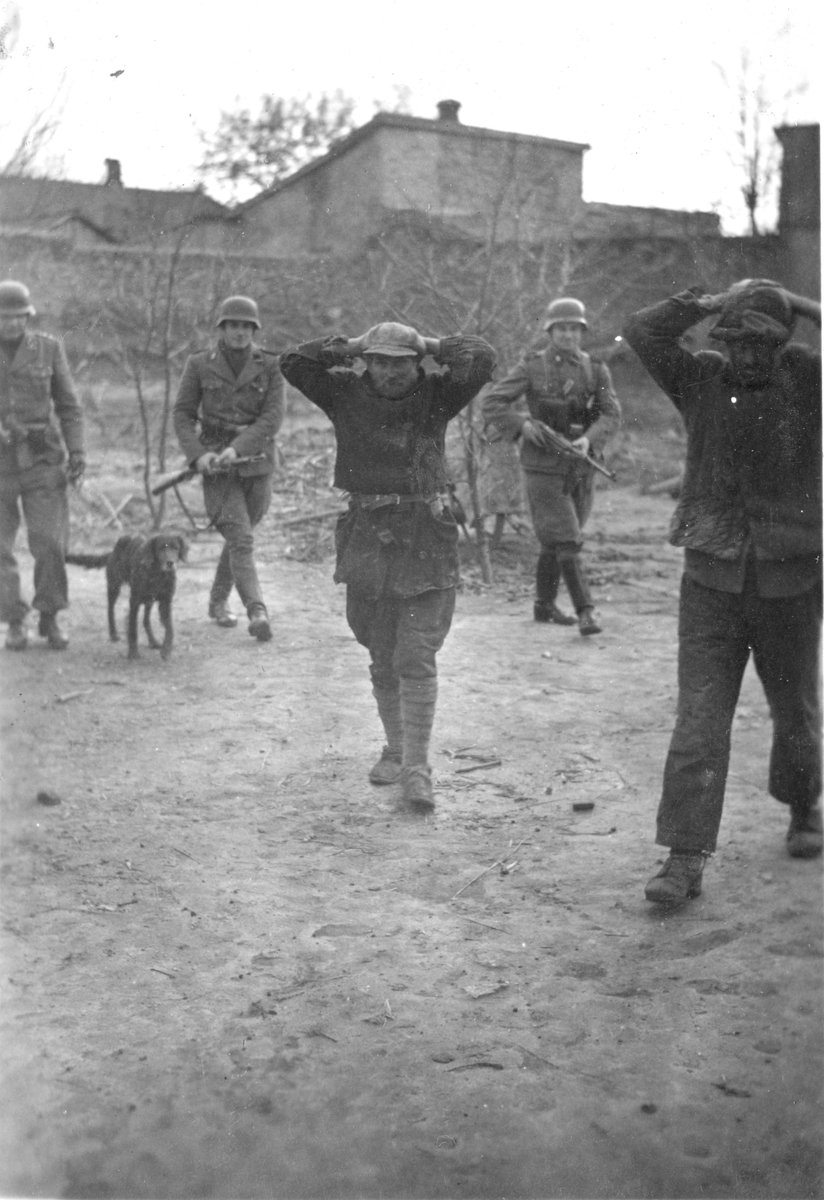During the Second World War, the Germans adopted different types of Kampfgruppe to address command decisions, whether in defence or attack. Institutionally, the concept was used by the police, the army, the Luftwaffe, the SS and the navy during military operations. 

Kampfgruppe could be small, company size, or an enlarged brigade. They could include all arms - tanks, infantry, artillery, or air units, or marine, or all of them. There were specialist Kampfgruppe, organised by engineers with some armour support, or infantry with assault guns. 

The most famous have been written about like Kamfgruppe Peiper or Kampfgruppe Walther but they don’t explain the cultural story of the this form of battlefield organisation. 

The German soldiery was regulated/trained/organised in cadres - Stammgruppe or core group. The field command placed faith in this basic training and reserve system. Although the military fronts expanded, this system remained constant. 

Sometimes, a number of local battalion sized formations could be gathered into a Kampfgruppe with less than 24 hours notice. In other cases the groups were formed for a planned specific task, as in the case of Peiper’s drive in the Ardennes.
The German soldier was trained in squad level aggression, to attack on the enemy flank, under cover of surprise, and to hit hard - even in defence. The Kampfgruppe was in some respects a a larger concentration of squad fighting power.








The Kampfgruppe could be likened to a large squad, often personalised by the commander. They complied with German manoeuvre warfare dogma - used to attack or counter-attack, for a local breakthrough, or to place an obstacle against an enemy advance.
Picture: @BundesarchivD


Picture: @BundesarchivD


@BundesarchivD As the war progressed masses of troops, perhaps from leave or recuperation, could be formed into a group and marched to the front. The story of the Kampfgruppe was wrapped into this story as a last desperate measure, an end of war myth.




@BundesarchivD The mass could be concentrated into an ad hoc Kampfgruppe. But, it would be wrong to assume every Kampfgruppe was an ad hoc formation. 

@BundesarchivD In June 1941, the German Army IX Korps successfully adopted the Kampfgruppe concept to assault the Bug river, push into Bialowieza forest and punch through toward the encirclement of Bialystok. They also used combined arms to counter a Red Army counter attack. 

@BundesarchivD The Luftwaffe incorporated the Kampfgruppe concept into its dogma, having first tested the ideas in Spain. The Luftwaffe twice used the Kampfgruppe concept in airborne operations, combining air power and lift - Holland 1940, Crete 1941.
Photos: @BundesarchivD




Photos: @BundesarchivD




@BundesarchivD In countering Soviet and Yugoslav partisans, the SS led by Erich von dem Bach-Zelewski adopted the Kampfgruppe to various situations. Two infamous formations were led by Dirlewanger and Reinefarth in Warsaw 1944. Discussed in detail in Hitler’s Bandit Hunters.






@BundesarchivD As political soldiers the Waffen-SS used the Kampfgruppe concept largely for propaganda purposes. As Hitler’s Fire Brigade, there were limits to what they could achieve after Kursk in 1943. Perhaps too much has been made of their performances. 

@BundesarchivD Before Operation Bagration in 1944 many Kampfgruppe were raised to form defensive boxes before the Red Army. They were partly successful in slowing down the advance but details are sparse and generally inconclusive. In my book ‘Birds of Prey’ there are references to 1944.
https://twitter.com/historianblood/status/1627220119142166534
@BundesarchivD How should we evaluate the German Kampfgruppe in WW2?
In Germany’s defeat it’s easy to conclude the system failed and the soldiery were increasingly ineffective. However, some Kampfgruppe were successful, but with high casualties as in Crete, or for a limited duration.
In Germany’s defeat it’s easy to conclude the system failed and the soldiery were increasingly ineffective. However, some Kampfgruppe were successful, but with high casualties as in Crete, or for a limited duration.
@BundesarchivD The Kampfgruppe offered a high level of flexibility for the Germans over the allies at the operational/tactical level. However, they could not force a strategic outcome or restore the strategic initiative lost in 1943.
@BundesarchivD If lessons were to be drawn from the Kampfgruppe - they were not war winning tactics and they were not a solution to mass. They could force friction against enemy mass but eventually their brittle power would break.
@BundesarchivD To exploit local successes, the Kampfgruppe still required the mass to fill the breach or exploit a breakthrough. Increasingly after 1943 the Kampfgruppe failed because the Germans lacked mass reserves to exploit successes. Hence it became a defensive plug against mounting chaos… twitter.com/i/web/status/1…
• • •
Missing some Tweet in this thread? You can try to
force a refresh

 Read on Twitter
Read on Twitter




























